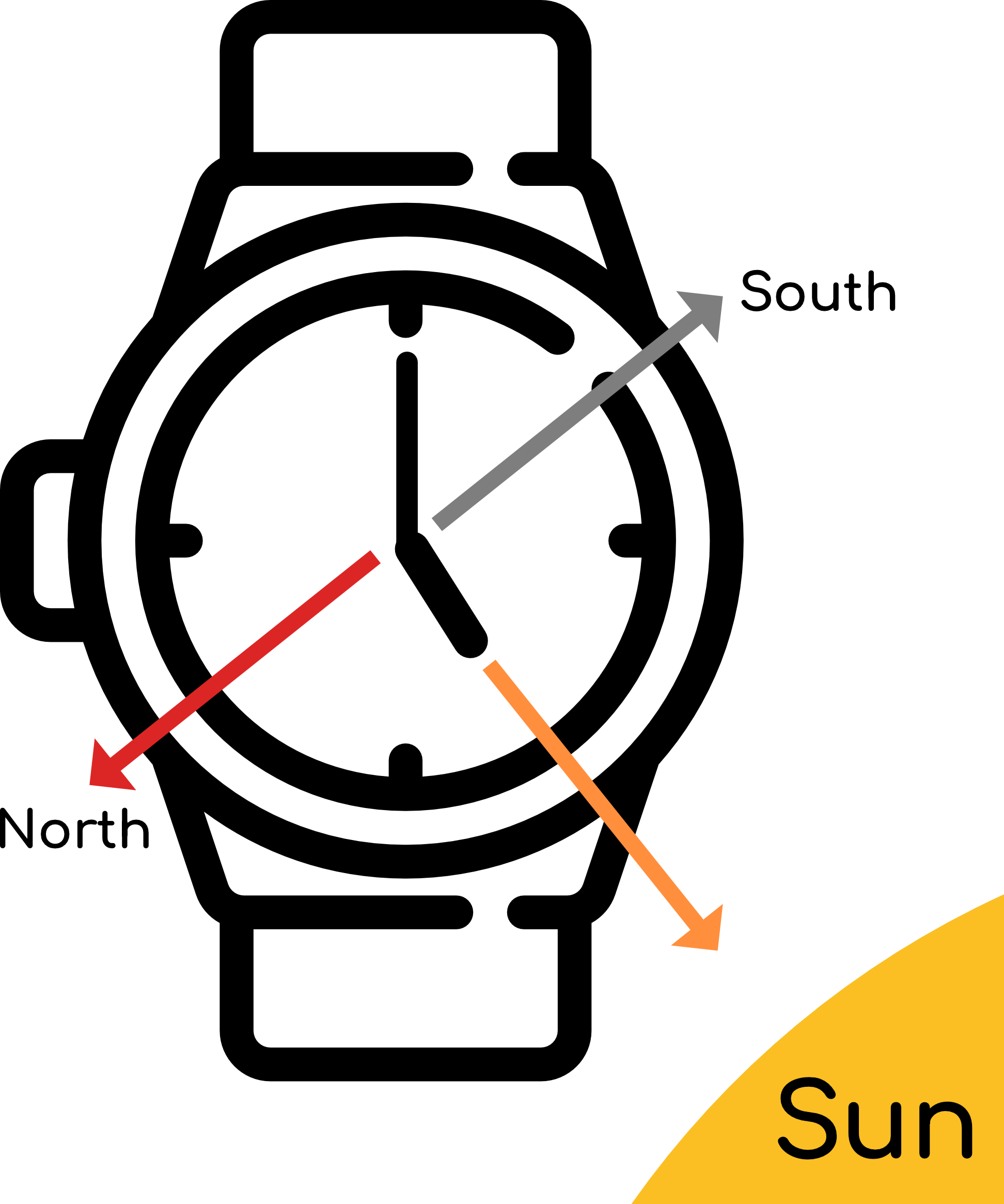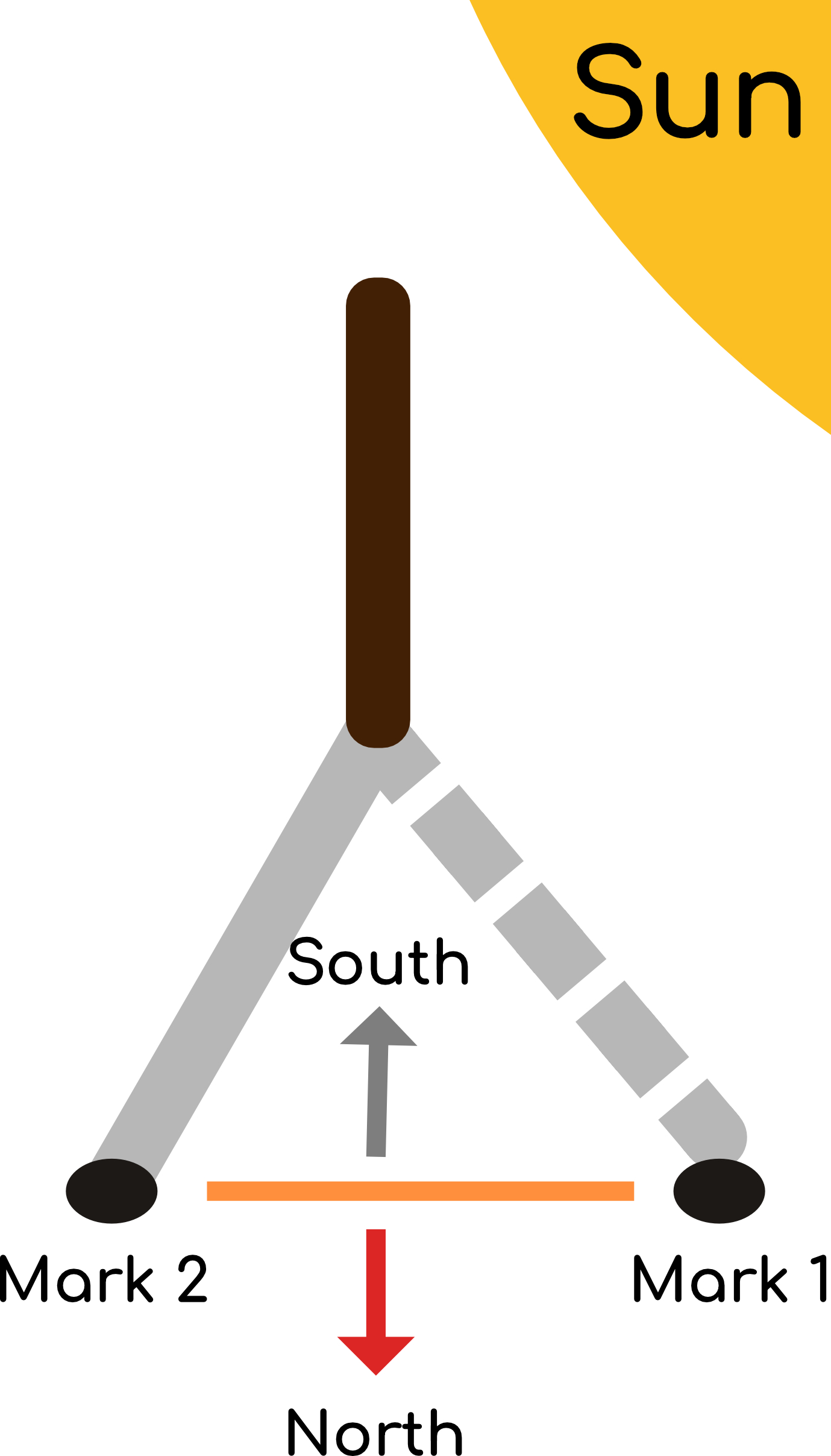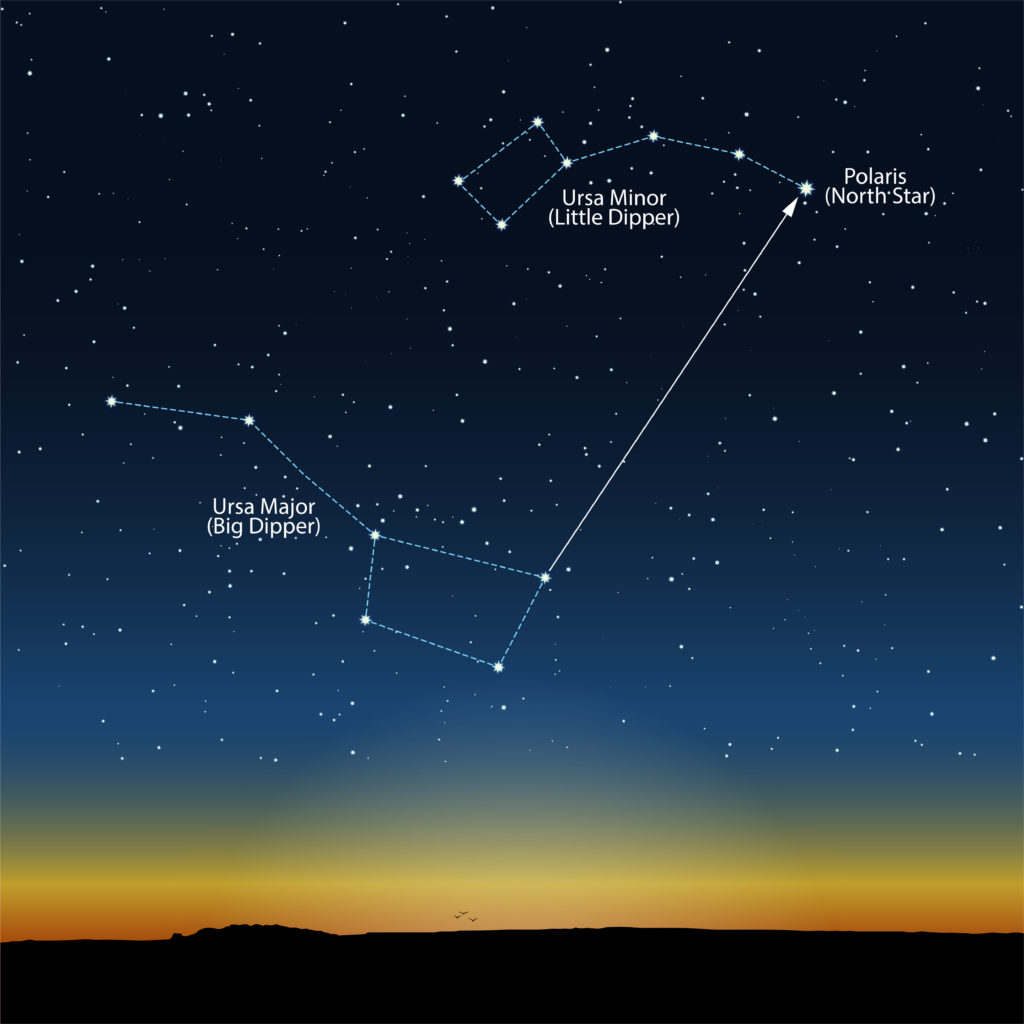Finding North without a Compass
The ability to find which direction is north is one of the most important skills in navigation. Usually this is done by using a compass, which will accurately indicate magnetic north. However, what if you find yourself without a compass? In this situation there are a few techniques that can be used to get a rough estimate of north.
The following techniques are largely only applicable in the Northern hemisphere.
☀️ The Sun
The sun rises in the east, and sets in the west
This is strictly only true on two days of the year, the spring and autumn equinoxes, but is a good approximation. Between sunrise and sunset, it moves from east to west through south. So the position of the sun in the middle of the day (by which I mean the time which is halfway between sunrise and sunset) is approximately south - the opposite is therefore roughly North.
⌚ A Watch

Strictly this method requires an analogue watch, but can be used as long as you know the time by drawing an image of an analogue watch at the current time and using that instead.
- Point the hour hand towards the sun
- Find the midpoint between the hour hand and 12 (on the left-hand side of the watch).
- This midpoint is approximately south.
- Therefore, in a straight line directly opposite is approximately north.
🪵 A Stick

This method only works on clear days as it relies on the stick making a shadow.
- Find a straight stick, approximately 1 foot long.
- Place it in the ground as upright as possible.
- Mark the position of the end of the shadow, perhaps using a stone.
- Wait for 20 minutes.
- Mark the new position of the end of the shadow.
- Mark the midway point on a line between the two marked points.
- The line between the stick and this mark is approximately north.
🌟 A Star

[Source]
From a technique that only works on clear days, to one that only works on clear nights.
Polaris, also known as the North star, is conveniently located only 1° away from being directly above the north pole. This means that it fairly accurately indicates North. Identifying it amongst the other stars in the sky is the skill required here - thankfully it is the brightest, and can be found using both ursa major, and ursa minor constellations (the saucepans 😂).
🌲 A Tree
As mentioned earlier, as the day progresses the sun travels through south in the northern hemisphere. This means that the south sides of objects (like trees) get a lot of sunlight - how often does Rightmove mention "south-facing garden" 👀? Moss, which thrives in damp conditions, therefore tends to grow better when facing north.
Knowing this allows us to infer that the mossier side of trees is likely to be the north side (in the absense of some other factor keeping that are in shade of course).
🗺️ A Map
I've purposely left this one to last because I'm not sure how one would find themselves out with a map, but without a compass - in any case, no judgement here.
By visually orienting the map, the top of the map will now point to grid north. Simple!
#GoForIt
Now that you've got a few techniques under your belt, you're well on your way to navigating even when a compass isn't available. Remember, these methods provide only a rough estimate of north, so it's always best to use more than one to add confidence to the your result.
As ever, happy exploring!